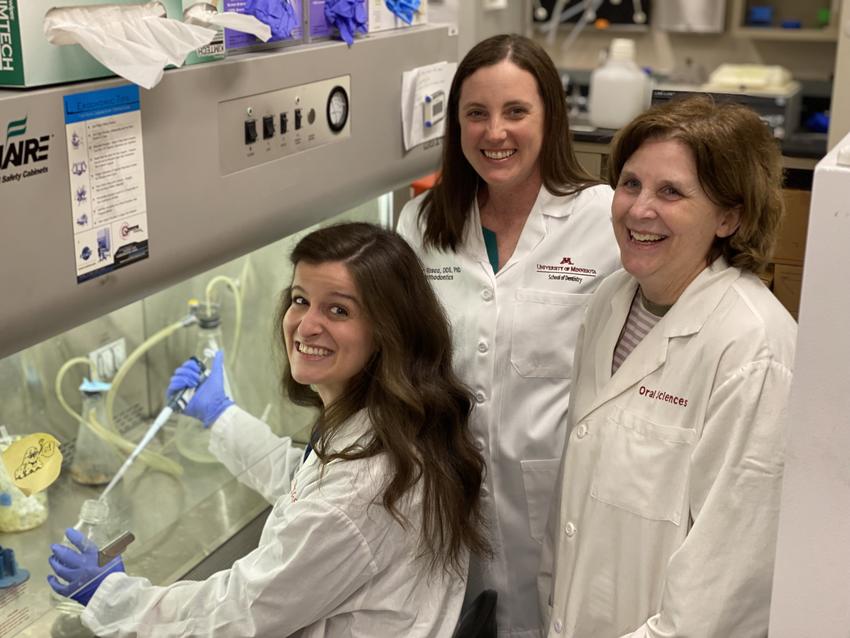Career-long partnership opens new horizons in clinical research

Kim Mansky, PhD, and Amy Tasca, DDS, PhD, are no strangers to working together. In fact, the director of the Minnesota Craniofacial Research Training Program served as the primary advisor to Tasca, holder of the Robert J Isaacson Chair of Orthodontics, during Tasca’s graduate studies. They haven’t stopped working together since.
It may seem atypical for a basic science researcher and a clinician to spend so much time together, but to them, it makes perfect sense. The two balance one another out: Mansky brings a mechanistic angle to Tasca’s research, while Tasca invites clinical applications to the work they do.
“I’ve always encouraged her to be more clinical,” Tasca said of Mansky.
And Mansky appreciates it. “As a basic scientist, I like the fact that I can still fulfill my interests, but at the same time try to understand something that might be more clinically relevant.”
The two also share a deep fondness and respect for one another. “I love working with Tasca,” Mansky said. “She’s a brilliant person, and we approach things differently, so we learn from one another.”
Tasca agreed, saying that though she loves her clinical work,Tuesday morning lab meetings with the Mansky lab are a highlight of her week. Thursday afternoon office drop-ins to say hello often lead to unfiltered work, family, and scientific conversations.
Recently, one of those conversations led to a new idea: working with the University of Minnesota Genomics Center to sequence genetic material between different skeletal sites, femurs and the mandible to identify variances between cells from different skeletal sites, thereby uncovering the mysteries behind diseases that primarily affect the jaw.
“This is an idea in its very early stages,” Tasca explained, “and there has not been much research done in the community on this topic. Our hope is to understand differences between the cells in the jaw, and develop an understanding of the jaw cells, rather than assuming all bone cells are the same, which is the undertone of most current studies.”
The focus continues osteoclast-related research that Tasca and Mansky have undertaken together since Tasca’s time in graduate school, but branches into a new line of questions with the jaw. The work for this project is being done by Rachel Phillips, DDS ’22 and PhD candidate, who studies under Mansky and Tasca.
The team applied for and received an American Academy of Orthodontists Foundation grant for the study, which they titled Where you originate from matters; a comparison of jaw and long bone osteoclast precursors using single cell analysis of osteoclast precursors. They plan to use the grant to gather initial data, which will then go toward forming hypotheses.
The groundbreaking nature of the research excites Tasca and Mansky, but so does the prospect of working with one another.
“This could signal a big shift in the way we diagnose and treat conditions in the craniofacial region,” Tasca said. “And it’s wonderful to keep working with Mansky, and to see Rachel come on board, too. Rachel is doing a lot of the work and has aspirations to potentially have an academic career similar to myself. It’s exciting to continue to see the impact Manksy has had, and the impact I hope to have, as well.”
Mansky agreed, indicating the power of their partnership in this research’s origin. “I don’t think I would have done this project without Tasca,” she said. “It just goes to show the power of partnering with a clinician as a basic scientist. I’m excited to do the experiment, to try new things but also discover this data and share it with this team. It’s going to be a fun summer.”